Businesses need to balance their product supply and customer demand permanently. But how do you meet demand and not overstock your inventory? That’s where a process called demand planning comes in. It’s a way to boost profits and minimize overhead costs.
What Is Demand Planning?
Demand planning is a cross-functional process that businesses use to meet customer demand while avoiding supply chain or inventory management disruptions. Demand planning is an ongoing effort that’s accomplished through the integration of product portfolio management, enterprise resource planning, marketing and sales.
You must use both internal and external business data to determine the demand forecast for your product as demand planning can be impacted by external forces such as labor force changes, economic shifts, natural disasters, global crises and more. The more of these factors that you consider, the more accurate your demand forecasting will be. Once that’s done, you can adjust your production planning.
Project management software gives you the flexibility to adapt quickly to changes in supply and demand. ProjectManager is online software that delivers real-time data to help you make more insightful demand-planning decisions. Our interactive kanban board project view allows you to create customized processes to track resources, inventory, demand and more. Use it to centralize processes for your team and ensure quality at every stage. Try ProjectManager free today.
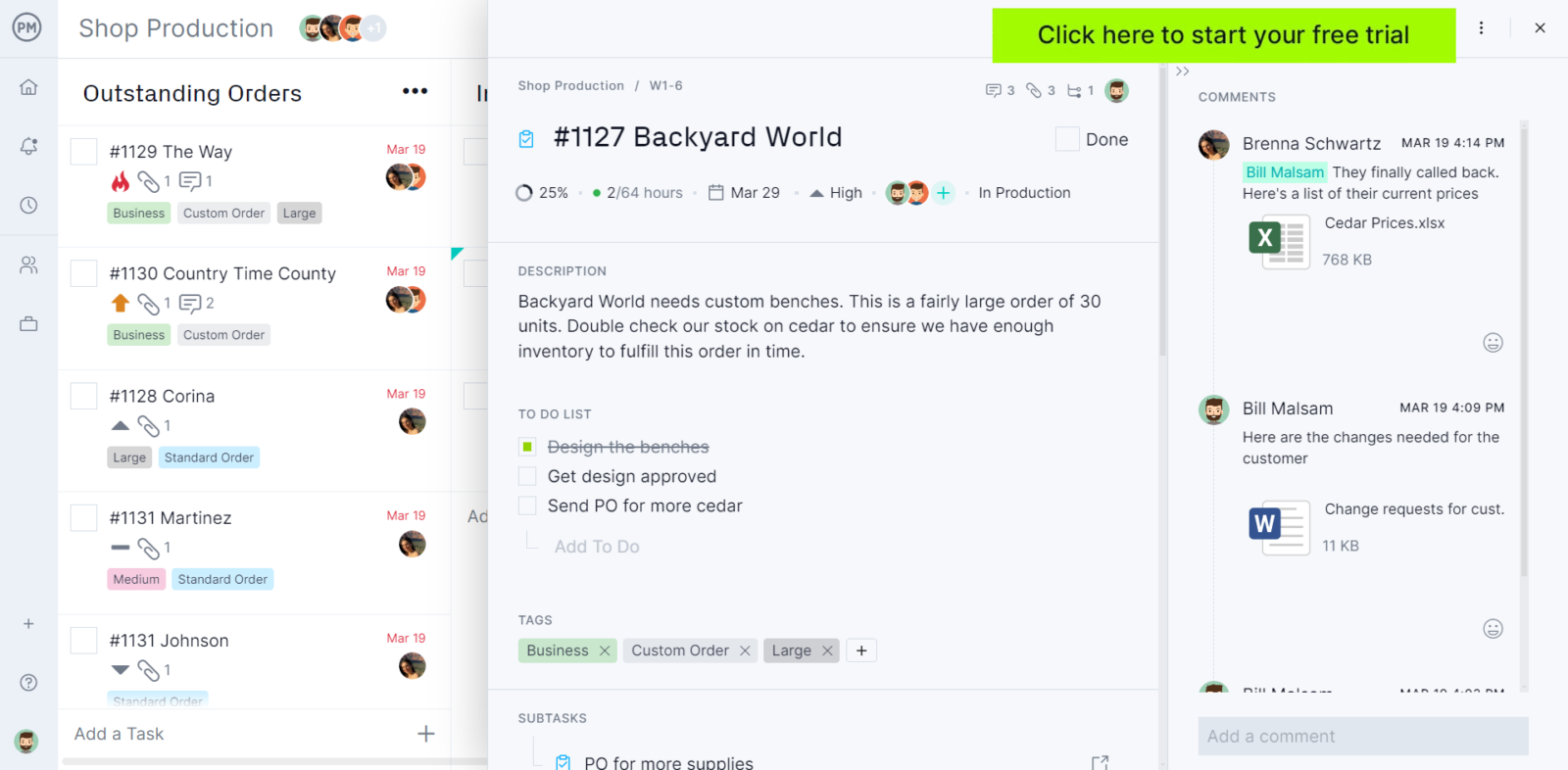
Why Is Demand Planning Important?
While striking a balance between supply and demand isn’t easy, the rewards are substantial. Demand planning can increase the profitability of your company, boost customer satisfaction and build efficiency in your production planning, inventory management and supply chain operations. All of this can be achieved by first making an accurate demand forecast and building a demand plan based on it.
What Is a Demand Plan?
A demand plan can be simply defined as an action plan that coordinates the efforts of multiple departments in an organization so that capacity planning, production scheduling and supply chain planning align with the demand forecasts. Demand plans help teams meet demand while increasing their profitability.
What Is the Difference Between Demand Planning and Forecasting?
Some confuse the terms demand forecasting and demand planning but they’re two different things. Demand forecasting is the first step of the demand planning process. It consists of the analysis of business data to estimate customer demand and create a demand forecast. To create an effective demand forecast, demand planners and project managers use information from areas such as marketing, sales, procurement, product management and supply chain planning.
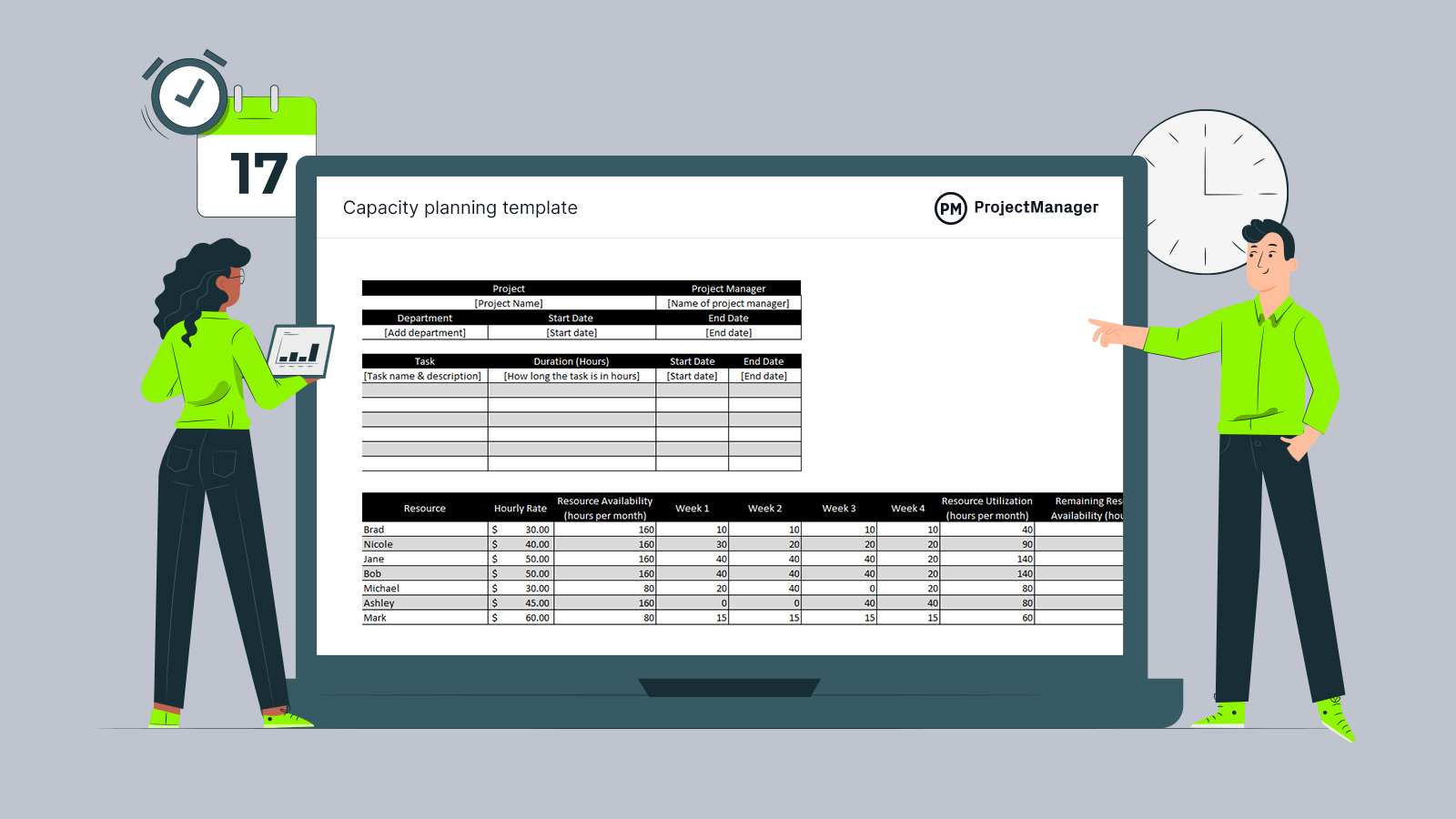
Get your free
Capacity Planning Template
Use this free Capacity Planning Template for Excel to manage your projects better.
Key Elements of Demand Planning
Demand planning is a complex procedure, but not impossible. Here are some of the elements that work together to help you balance demand with supply:
- Data collection & data modeling: Gather data from both internal and external sources, which puts demand in context.
- Statistical forecasting: You can create a demand forecast by using statistical analysis methods to make demand forecasts based on your sales, inventory management and capacity planning data.
- Product portfolio management: Product portfolio management consists of managing multiple product lines simultaneously to achieve cost efficiencies and other strategic benefits.
- Trade promotion management (TPM): TPM refers to the multiple efforts that organizations take to cause an increase in customer demand.
- Business analytics: Feed your collected data into business intelligence tools such as predictive analytics to make demand forecasts.
- Collaboration: Work with your suppliers, manufacturers, salesforce and other stakeholders in your supply chain to collect information that can impact demand.
These considerations let you make a demand forecast, which is an informed prediction of the demand you expect. That leads even further to the next step, which is creating a demand plan.
Demand Planning Methods
There are several demand planning methods that can be employed to prepare your business to meet customer demand. Here are different approaches you can try.
Delphi Method
The Delphi method relies on a panel of cross-functional subject matter experts that make a demand forecast by reaching an agreement between their perspectives about future market trends and potential customer demand.
Benchmarking
Benchmarking consists of comparing your business with top competitors in your industry. This helps managers and demand planners compare performance metrics and business processes with other companies to create realistic demand forecasts.
Linear Regression
Linear regression is a statistical method that weighs in different variables to estimate future demand. With this method, managers can make demand forecasts for different scenarios that are based on historical sales data, as well as economic and market conditions.
Demand Sensing
Demand sensing uses artificial intelligence and real-time data to create demand forecasts based on current demand management information, instead of using historical data.
Capacity Planning Template
This free capacity planning template helps you ensure you have enough human resources to manufacture the number of product units that are needed to meet customer demand and helps you calculate what labor costs will be based on the pay rate of your employees. It allows you to list your team members, their hourly pay rate, total available hours and assigned work hours per week. You can also monitor the utilization rate and remaining availability for all your team members.
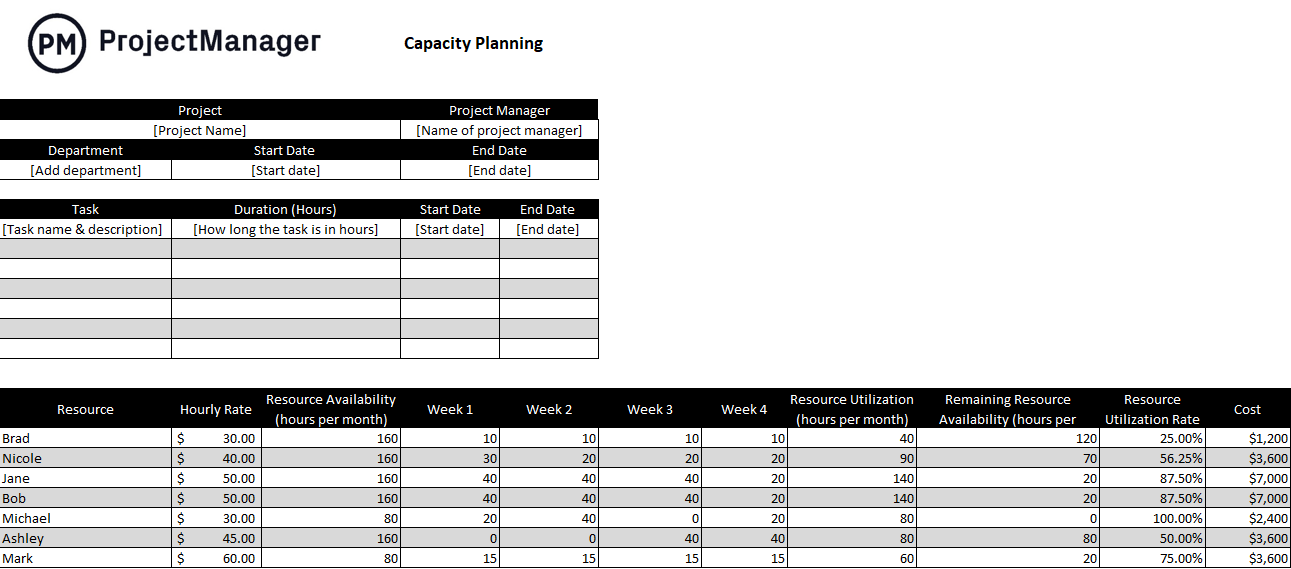
Demand Planning Process
The demand plan is an outline of the amount, type and location of inventory you need to meet your customer’s demand. All demand plans roughly follow these seven steps:
- Assemble your team: Put together a coordinated and effective cross-functional demand management team with clearly defined roles and responsibilities.
- Define internal data: Find agreement on which sales data, inventory turnover, lead times, etc., are relevant for forecasting future demand.
- Add external data: Gather qualitative and quantitative information from customers, suppliers, consultants and any other external sources.
- Choose a demand planning method: Choose a demand planning method based on your business’ needs. You can use multiple approaches to refine your demand planning process.
- Use demand planning tools: Demand planning is a complex process. Use different tools to help you streamline your demand planning activities such as business intelligence software, ERP software and project management software.
- Make a demand forecast: Collaborate to decide what type of demand forecasting model fits your company and develop it.
- Review and refine: Take your demand forecast to stakeholders and have them review and analyze the work, adding any new data to see if the predictions still hold. Then, refine your data as needed.
- Check your inventory: Determine the inventory levels you need to meet your demand forecast, including a bit extra as a buffer. Identify vendors who will help you meet this demand and ensure they can deliver on your timeline.
- Track results: Use key performance indicators (KPIs) to measure the effectiveness of your demand plan and make adjustments as needed.
Demand Planning Best Practices
There are a few things you can do to make sure your demand plan is the best it can be. The first is to define the balance between your statistical modeling and collaborative forecasting. This creates accountability and leads to more continuous improvement in your company.
When you’re not forecasting, demand sensing and shaping can be helpful. You shape demand to change how demand occurs, and demand sensing involves catching data further downstream to reduce information latency. Use these to increase your accuracy when determining the most profitable mix of what you’re selling balanced by demand.
Finally, an important practice is measuring your forecast at the product, location and customer level. This facilitates continuous improvement and boosts accountability. The best way to measure improvement over time is while reviewing sales and operation planning.
How ProjectManager Simplifies Demand Planning
To make better decisions as you measure and act with demand planning, you need project management software. ProjectManager is online software that gives you accurate insights, connects teams and lets you manage several projects at once.
Let Your Teams Work Their Way
For demand planning to work, you need to work with cross-functional teams across your company. Different departments prefer different tools, which is why ProjectManager has multiple project views. Managers tend to prefer our robust Gantt charts, but marketing and sales might want to use a task list or kanban board. Whatever view they use, the data is instantly updated and shared across the whole platform, keeping everyone on the same page.
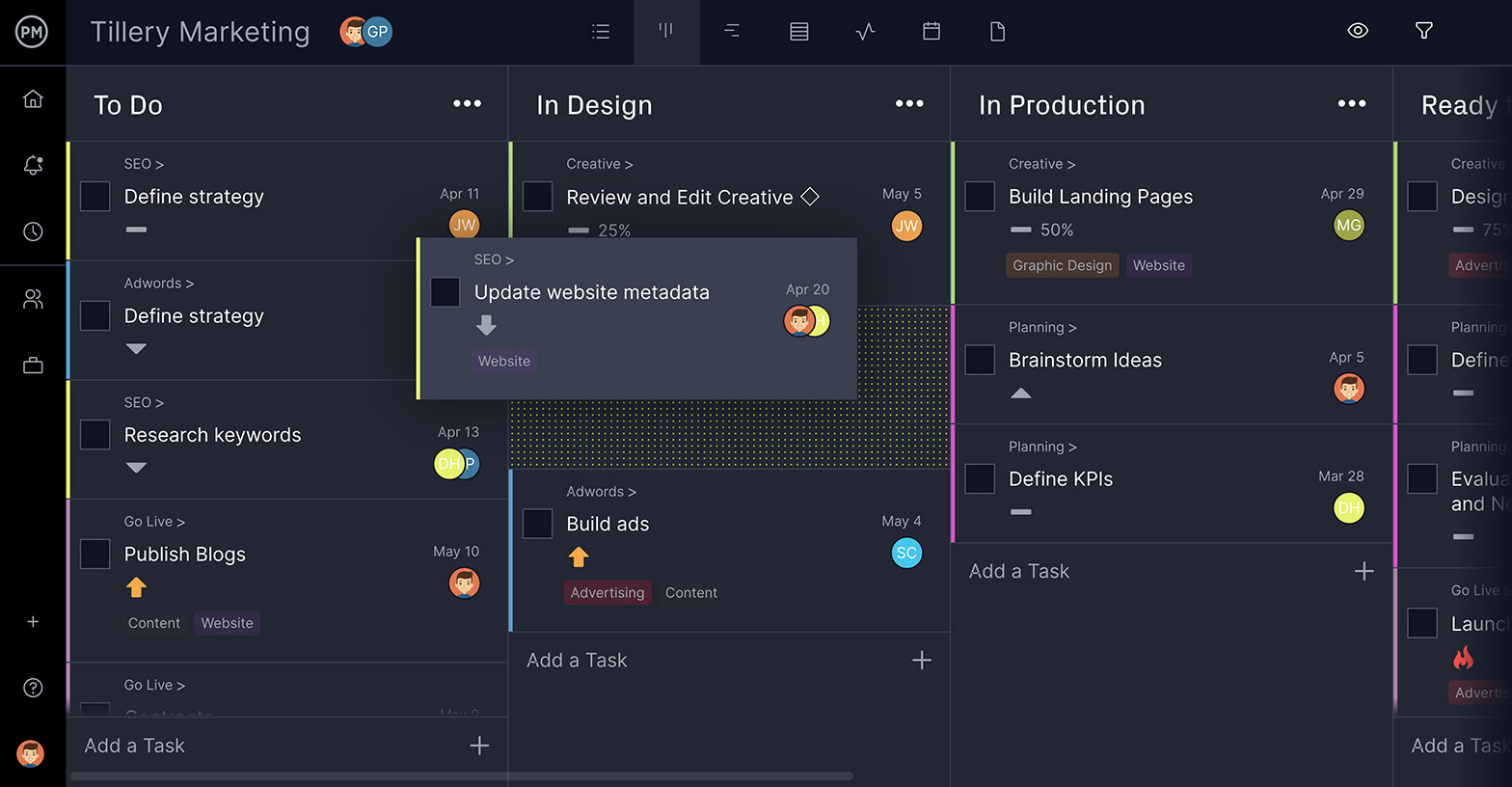
Manage Multiple Projects with Ease
Measuring metrics can be difficult, and even more so if you’re trying to track several demand plans. ProjectManager has product portfolio management tools that let you scale with your production. Use our roadmap to get a full view of all the projects you’re managing. From this vantage point, you can see how resources can be shared across all your work, which helps improve efficiency.

Track Improvements on Dashboards
Dashboards are a great way to get an instant status report. ProjectManager’s dashboard is fully functional from the get-go and collects real-time data. There’s also a portfolio dashboard that captures metrics across all your demand plans with live data. Use them to make better decisions and continuously add improvements to your demand planning.
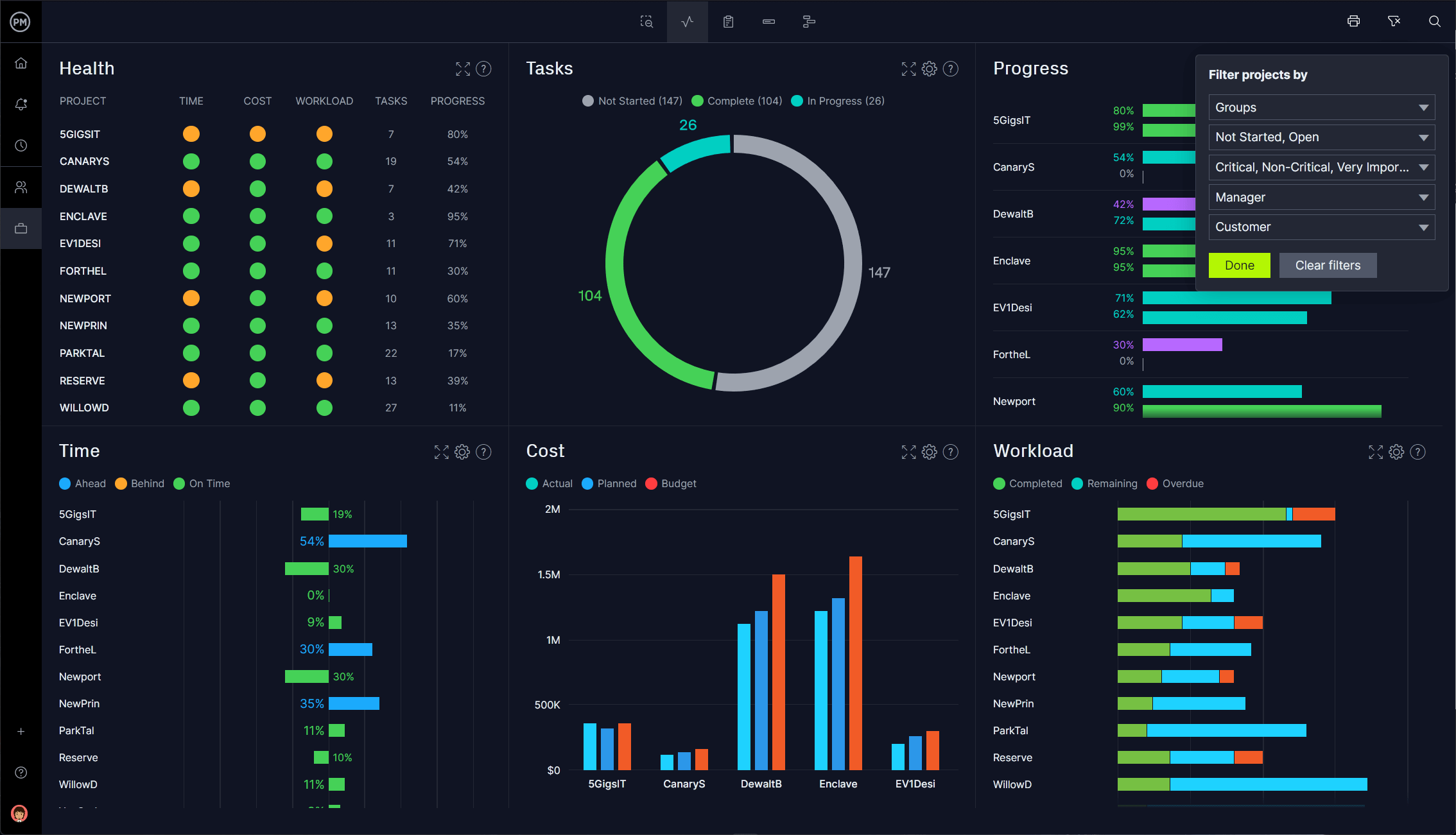
ProjectManager is award-winning software that organizes your work and delivers efficiencies. With features to help you plan, monitor and report on your work, collecting key metrics, ProjectManager is the only software you’ll need to balance demand to supply and keep your production moving forward. Try ProjectManager today for free.

